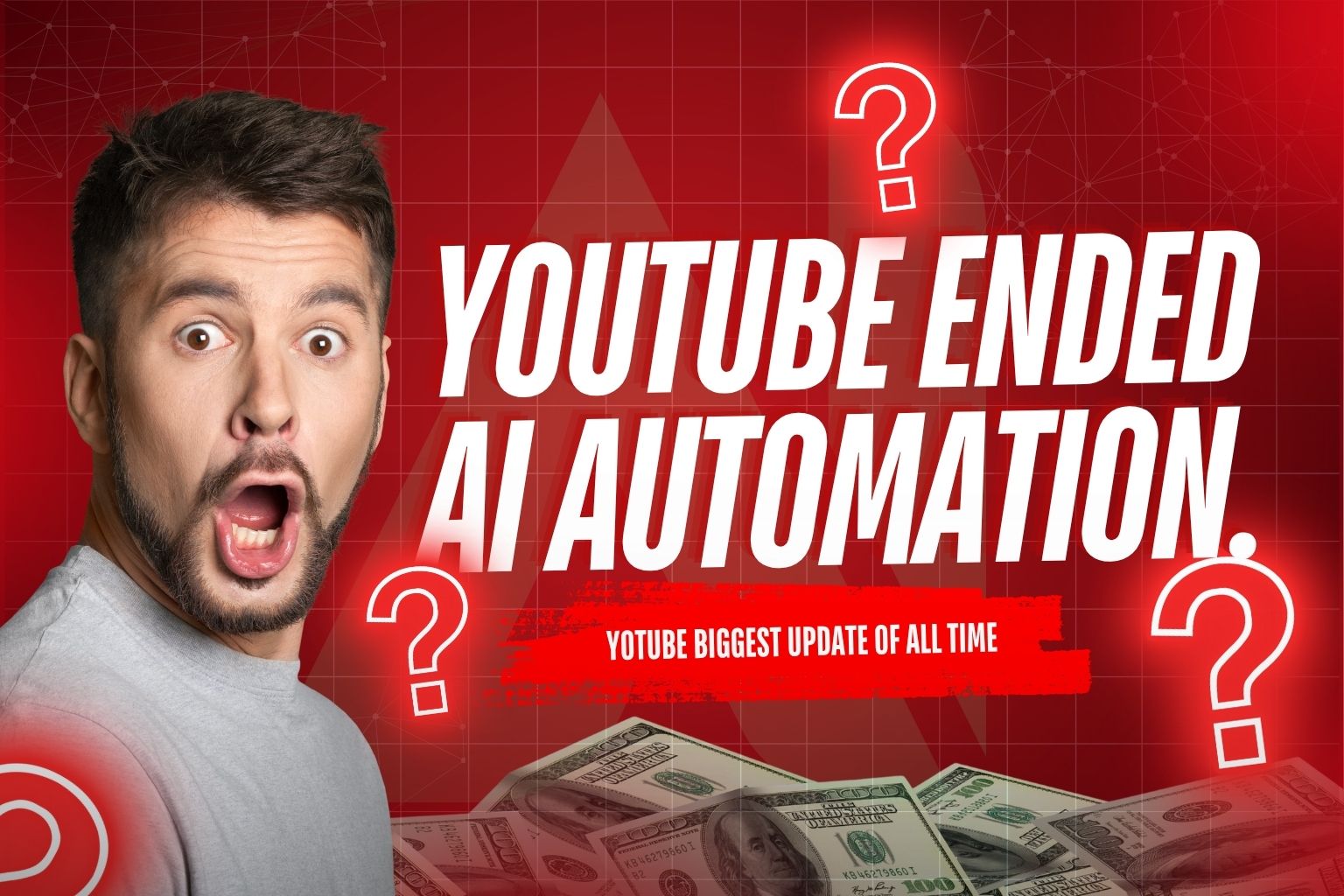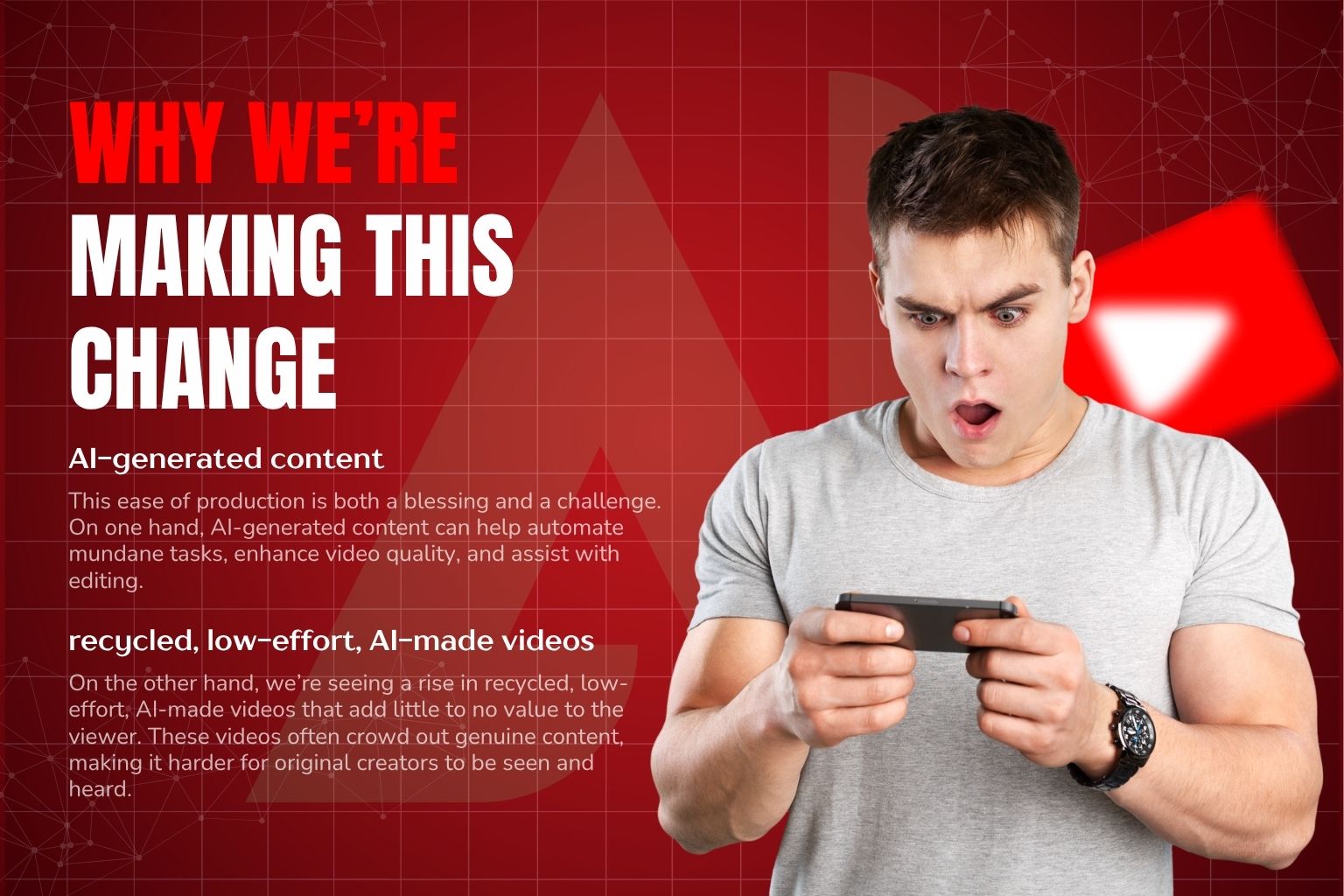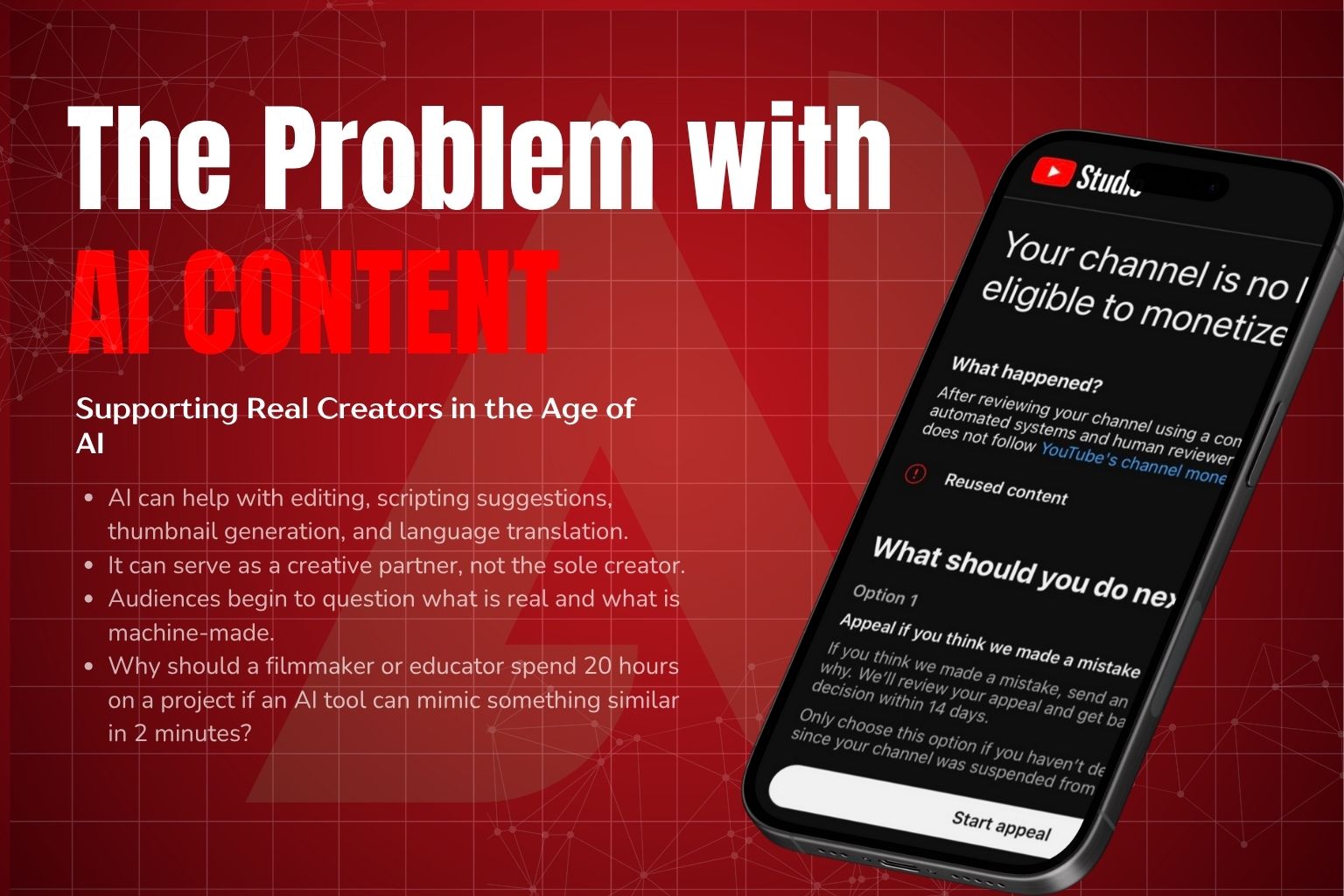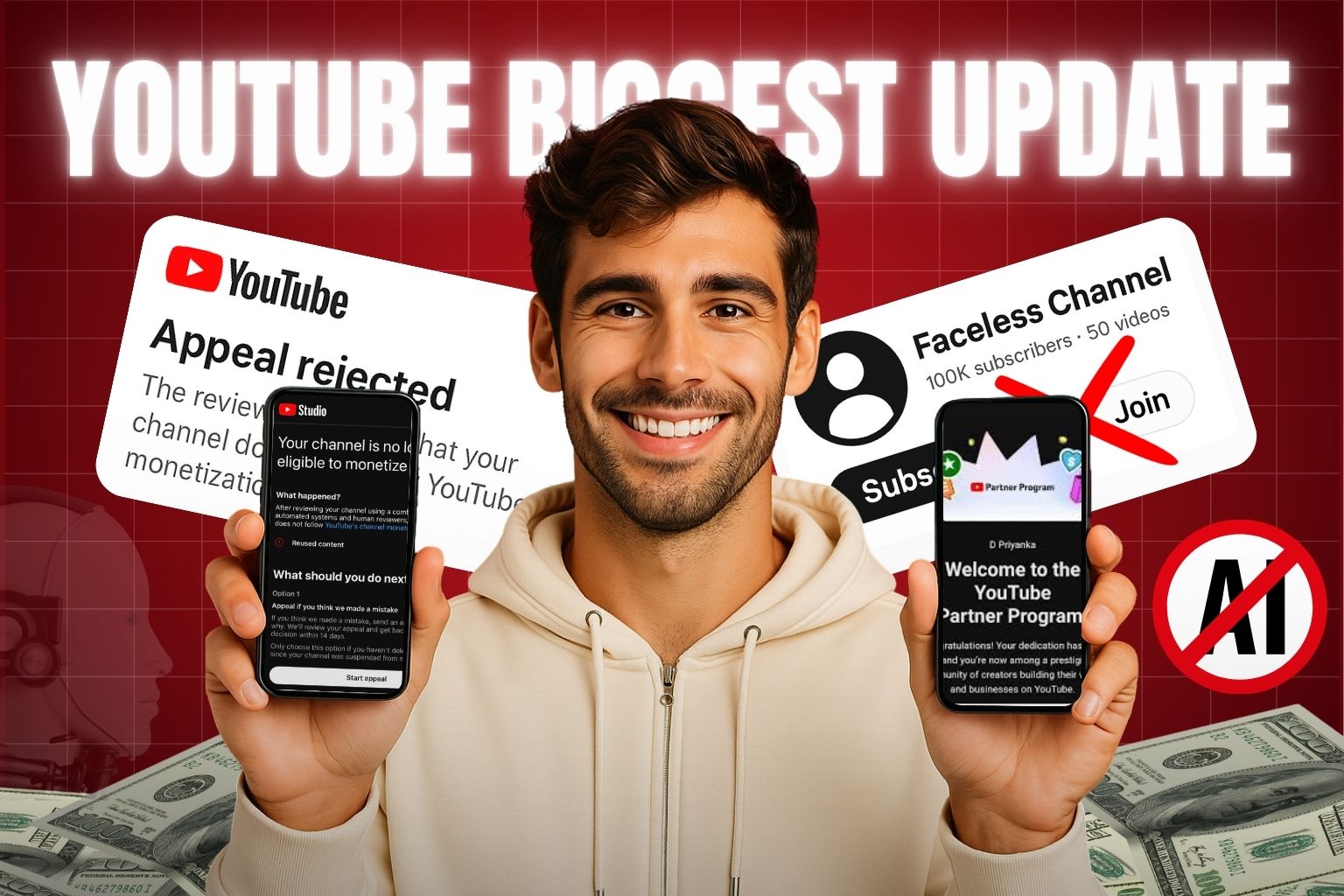YouTube’s Bold Move: Prioritizing Human Creativity Over Mass AI-Generated Content
Smash Code
Jul 16, 2025

YouTube aims to prioritise human creativity over AI-generated content. The digital landscape is evolving at breakneck speed, and at the heart of this transformation lies the explosive rise of generative AI. While this technology has unlocked new possibilities for creators, it has also introduced a flood of content that often lacks the authenticity and innovation viewers expect.
In response, YouTube is introducing a major change to its monetisation policy. Starting July 15, the platform will only pay for original and authentic videos.
Is this an attempt to halt the unstoppable rise of AI-generated content—or the first real sign that a global platform is placing its faith in human creativity?
Why YouTube is Valuing Effort and Authenticity

YouTube has given millions of creators a voice, a livelihood, and a chance to make an impact. But we’re also witnessing a shift: as AI tools become more accessible, it’s now easier than ever to generate mass content at the click of a button.
This ease of production is both a blessing and a challenge. On one hand, AI-generated content can help automate mundane tasks, enhance video quality, and assist with editing.
On the other hand, we’re seeing a rise in recycled, low-effort, AI-made videos that add little to no value to the viewer. These videos often crowd out genuine content, making it harder for original creators to be seen and heard.
The heart of this policy change is simple: YouTube want to reward creators who invest time, thought, and originality into their content. Whether it’s a thoughtful documentary, a unique comedy sketch, or a deeply personal vlog, real creativity deserves recognition and support.
The Problem with Unlimited AI-Generated Content

AI can now generate hours of video, full scripts, lifelike voiceovers, and even synthetic personalities. And while this might seem impressive on the surface, it introduces a major challenge: content saturation.
With AI’s ability to endlessly churn out similar-looking videos, our platform risks becoming a library of sameness—a digital sea of content lacking soul, depth, or perspective.
This saturation impacts:
- Searchability: It becomes harder to surface meaningful, high-quality content amidst AI noise.
- Viewer trust: Audiences begin to question what is real and what is machine-made.
- Creator motivation: Why should a filmmaker or educator spend 20 hours on a project if an AI tool can mimic something similar in 2 minutes?
We’ve heard from thousands of creators who feel discouraged watching their original work get buried under AI remakes and clones. We’re listening—and acting.
Supporting Real Creators in the Age of AI

YouTube thrives because of its creators. Their passion, storytelling, and ingenuity fuel our ecosystem. If this platform doesn’t protect their work and reward originality, we risk turning YouTube into a place that no longer inspires or innovates.
YouTube’s new monetisation rule reflects a renewed commitment to human creativity. YouTube is not banning AI—far from it. They believe that AI can be a powerful creative assistant, but not a replacement for the human spark that brings ideas to life.
For instance:
- AI can help with editing, scripting suggestions, thumbnail generation, and language translation.
- It can serve as a creative partner, not the sole creator.
But monetisation will now be tied to content that is uniquely human—driven by originality, personality, and effort. This ensures that our platform stays vibrant, diverse, and meaningful.
The Future of AI in Content Creation: A Tool, Not a Replacement
Generative AI is here to stay, and it has immense value. But it must be used responsibly. When used correctly, AI can elevate content, making it smarter, faster, and more efficient to produce. It can democratize creativity by lowering barriers for new creators. But it must never replace the heart and soul of storytelling: the human voice.
We’re entering an age where viewers are craving realness—real emotions, real experiences, and real people. And while AI can replicate style, structure, and even speech, it cannot replicate the raw honesty of a life story, the subtle humour of a skit, or the cultural depth of a documentary made with love.
That’s why this move isn’t just a policy shift—it’s a signal to the world. YouTube believes in creators. They believe in their originality, their passion, and their humanity.
A Call for Balance: Merging AI and Human Creativity to Delight Viewers
YouTube's stance is not anti-AI. It is pro-creativity. As we move forward, the best content on YouTube will likely come from creators who leverage AI without being defined by it. They’ll use AI to brainstorm, edit, and enhance—but the final output will still reflect their unique voice.
Here’s how creators can integrate AI while still staying original:
- Use AI tools for editing and enhancement, but infuse your content with personal stories or opinions.
- Incorporate AI-generated visuals or music, but ensure the core message or delivery is your own.
- Experiment with AI-assisted creativity, but stay grounded in your original purpose or passion.
This is not about resisting technology—it’s about using it thoughtfully. AI should be your co-pilot, not your ghostwriter. Your audience wants to connect with you, not a machine’s output.
Final Thoughts: The Human Touch Will Always Matter
This monetisation policy is about more than just money. It’s about shaping the future of our platform. YouTube is a space built by humans, for humans. The YouTube goal is to ensure that as technology evolves, their values—authenticity, creativity, and innovation—remain intact.
YouTube invite creators to embrace this challenge and rise to the occasion. Use AI wisely, but let your humanity lead the way. Tell stories only you can tell.
Because at the end of the day, AI may generate content, but only humans can create meaning.